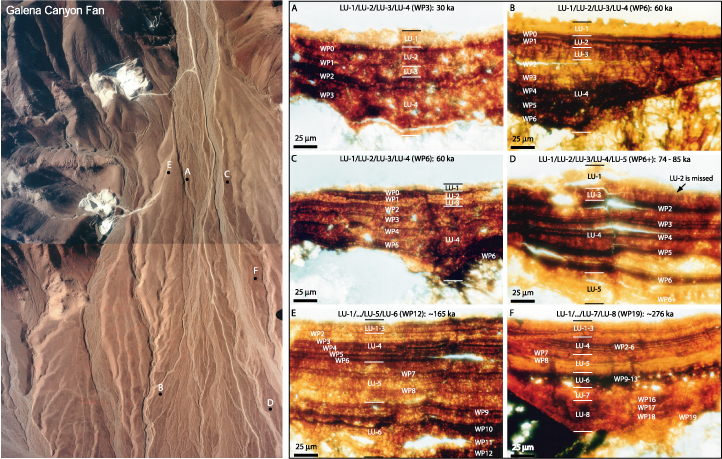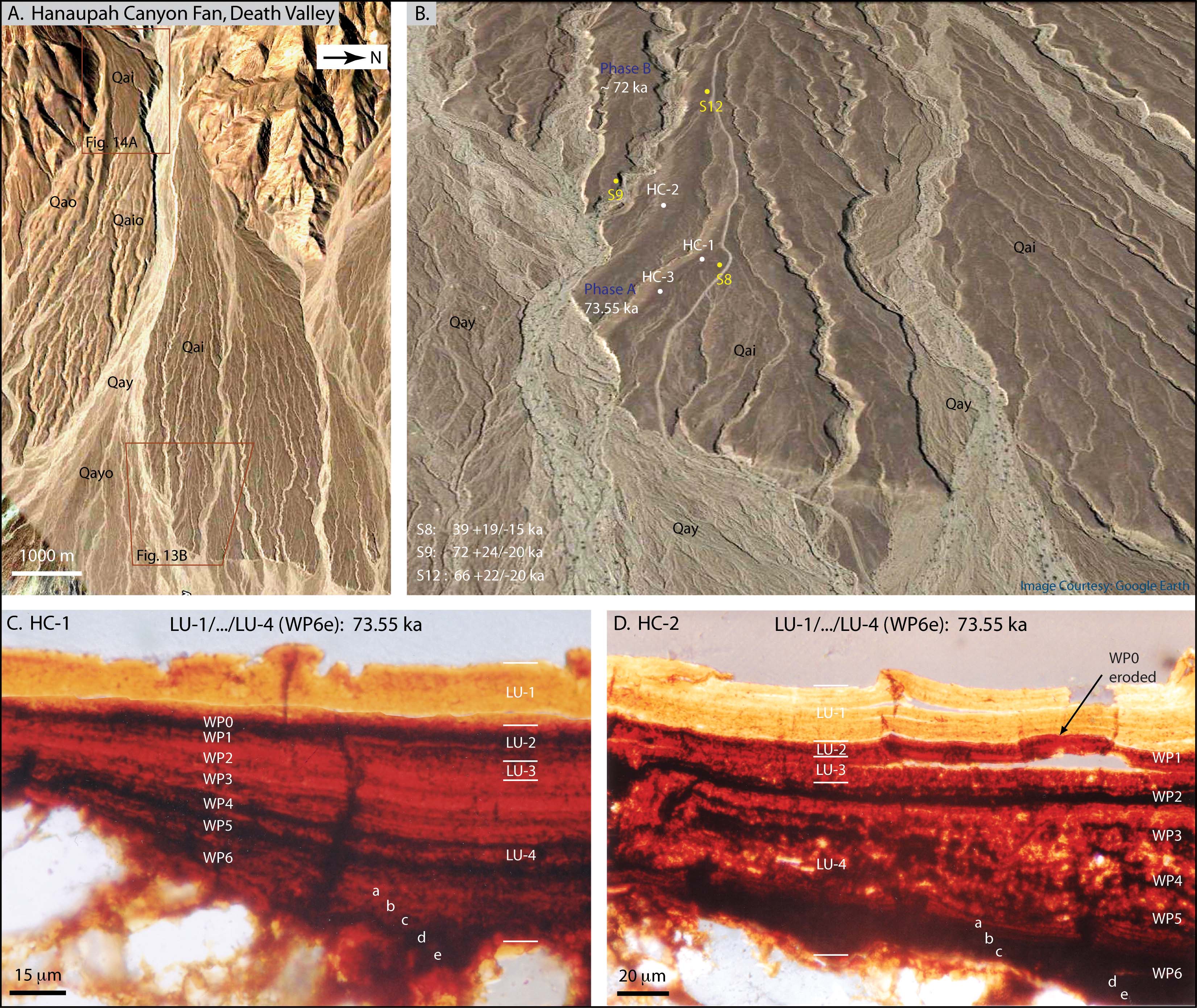

Figure Caption Vertical aerial photo of late Quaternary alluvial-fan surfaces of varying age at Galena Canyon, Death Valley (left panel) and VML age estimates for these fan surfaces (right panel). Note that the VML age estimates of ~165 ka and ~276 ka for varnish samples E and F, respectively, are based on presumed correlation of basal dark layers LU-6 (WP12) in E and LU-8 (WP19) in F with the cold episodes represented by δ18O isotopic events MIS 6.42 and MIS 8.4 in the SPECMAP record (Martinson et al., 1987).

Figure Caption (A) Hanaupah Canyon fan with mapped surface units of Qao to Qay (Machette et al., 2008). (B) Distal part of Hanaupah Canyon fan showing at least two episodes of large-scale Qai fan aggradation (i.e., phases A and B) and sampling sites for both VML dating (white dots) and cosmogenic 36Cl depth-profile dating (yellow dots). Mapped surface units of Qai and Qay are from Machette et al. (2008). (C) and (D) Microstratigraphies in varnish from the phase A fan aggradational surface in (B) display two oldest layering sequences of LU-1/.../LU-4 (WP6e), yielding a minimum-limiting VML age estimate of 73.55 ka, in agreement with the 36Cl depth–profile ages of 66+22/−20 (S12) and 72+24/−20 ka (S9) for the dated Qai fan surface (Machette et al., 2008). Note that the youngest fan units (Qayo and Qay) represent fan aggradation events during the glacial-to-interglacial climatic transition (12–24 ka) and the Holocene interglacial (0–12 ka) (Liu and Broecker, 2008; Machette et al., 2008), and they are largely confined within the main trunk channel that entrenched into Qai and older fan units of Hanaupah Canyon fan, or emplaced at the fantoe (cf. Liu and Broecker, 2013).

Figure Caption VML dating of tributary fan formation near the apex area of Hanaupah Canyon fan in Death Valley, California. (A) A small-sized tributary fan (~0.5 km2) on the south side of the main trunk channel at the apex of Hanaupah Canyon fan, showing two episodes of large-scale fan aggradation (i.e., phases I and II) and sampling sites for VML dating. (B) and (C) Visual microstratigraphies in varnish from the phase I fan surface in (B) display two oldest layering sequences of LU-1/.../LU-5 (WP6e+), yielding a minimum-limiting VML age estimate of 73.55–86.75 ka. (D) and (E) Visual microstratigraphies in varnish from the phase II fan surface in (B) display two oldest layering sequences of LU-1/.../LU-4 (WP6c), yielding a minimum-limiting VML age estimate of 66.15 ka. Note that the phase II fan aggraded around 66.15 ka during a wet period of MIS 4 onto the phase I fan surface, which aggraded earlier around 73.55–86.75 ka during a dry period of the last interglacial (MIS 5a). Also note that the youngest fan units (Qayo and Qay) represent fan aggradation events during the glacial-to-interglacial climatic transition (12–24 ka) and the Holocene interglacial (0–12 ka) (Liu and Broecker, 2008; Machette et al., 2008), and they are largely confined within the main trunk channel that entrenched into Qai unit of the tributary fan (cf. Liu and Broecker, 2013).